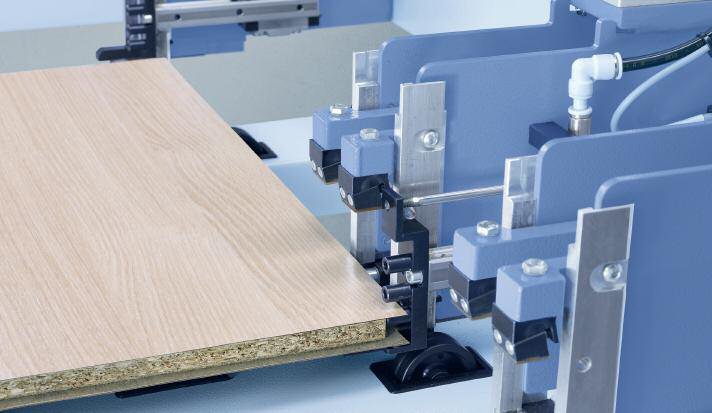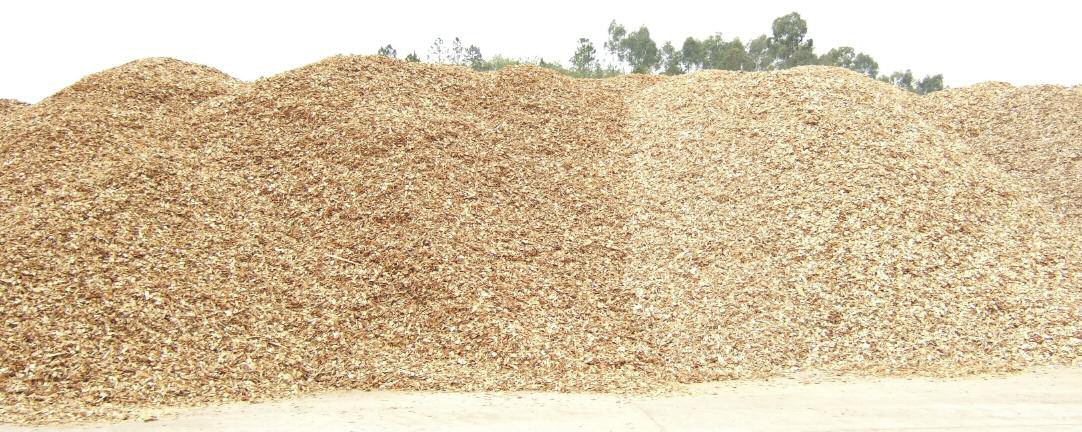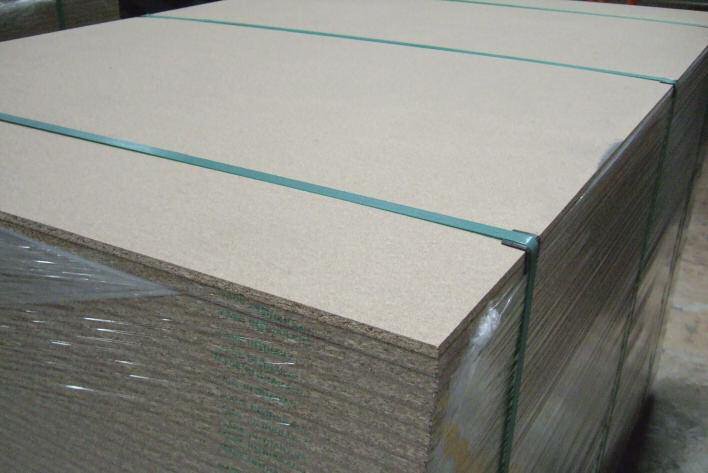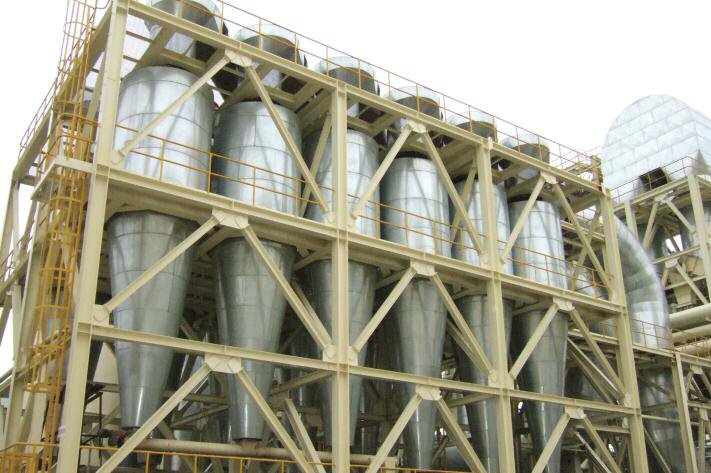South America and Asia promise new capacity
3 December 2010In part l of our survey of the world particleboard manufacturing industry during 2009, we reported an improvement in the market in parts of Europe after the severe blows of the global economic crisis, while North America continued to suffer poor demand.
In part 2 of our 2010 survey of capacities in 2009, we look at the mills outside Europe and North America and find a number of plans for expansion, particularly in South America, as well as in various parts of Asia.
Our capacity figure for the ‘Rest of the world’ industry shows an increase of 1,917,000m3 over the 2008 capacity of 28,507,000m3. This represents a rise of 6.6% to 30,391,000m3 for 2009.
This increase is mainly accounted for by new mills – listed in our survey of 2008 as coming on stream in 2009 – doing just that.
However, there is also a small increase in capacity attributable to the fact that we have added two previously unrecorded mills which were already in existence but only recently came to our attention.
These are Star Particleboards in Bangladesh (two discontinuous Siempelkamp lines totaling 280,000m3 pa) and one line at Tokyo Board Industry Co Ltd in Japan (multi-opening Dieffenbacher, 112,000m3 pa).
As always, we are very pleased to receive information about any mills or production lines that may have escaped our net when we are trawling the globe for information.
We use a range of sources including equipment suppliers, industry experts, relevant publications and not least the mills themselves, who are invited to visit our website www.intermark.plus.coamt any time and enter or amend their details, or to email the editor: mbotting@wbpionline.co. mSuch input is always most welcome in helping to ensure that our information is as accurate as possible.
As stated in part l, European and North American capacity increased by 4.65% in 2009 compared with 2008, solely due to additions in Europe, chiefly outside the ‘EU15’ countries.
So where did the real increases in the ‘Rest of the world’ figures come from?
North East Asia +4.2%, but that includes Tokyo Board; South East Asia +6.8%; Other Asia +12% (but due to Star Particleboard, Bangladesh added to a small regional total); South America +21.8%; while Africa and Australasia remained essentially unchanged.
Capacity in Europe and North America in 2009 combined totalled approximately 65,752,000m3, or around 68.4% of the world total of 96,143,000m3. This figure is only 290,000m3 above our forecast this time last year, for reasons already stated.
Meanwhile, the global aggregate total shows a growth of 5.3% over 2008’s 91,290,000m3. This compares with a growth of only 1.3% between 2007 and 2008.
Within this figure for 2009 lies an increase of around 13% in ‘Other Europe’ – almost twice that recorded for the total ‘Rest of the world’ figure.
As we have cautioned before, it must be always remembered that the figures we present in this survey are capacity figures only and that utilisation figures may be very different.
Having said that, our Focus on Latin America in the last issue of WBPI stressed the optimism pervading that region’s panel industry – notably in Brazil – and the likelihood of further expansion of panel making capacity to meet demand.
It is also worth mentioning the strong move to ‘medium density particleboard’, or MDP, in that region, ‘invented’ by Brazil; something which does not seem to have caught on elsewhere in the world, yet at least.
Is this a marketing gimmick or a response to a genuine demand? You decide, but we suspect the latter is the truth, though we have no plans to establish a separate category for MDP in our surveys – yet!
The editor of WBPI and the author continue to extend their thanks and appreciation to all the respondents who took time to complete the enquiry form, or to send their comments separately about new projects, closures and changes of ownership during the past year.
We recognise that even after several years our lists are not complete and nor do they always contain the most accurate information for some mills. The timing of new lines or plant modifications which add to capacity can be difficult to confirm against originally announced schedules.
This has become an increasing problem during the recent uncertain economic times. The problem of existing, but previously unrecorded, mills has a relatively small impact globally but can be significant on a regional basis.
Adding them to the lists in any given year will show an apparent growth in capacity unless modifications are made historically.
The net effect of the changes is to show an increase in the number of lines, as expected with the increase in capacity. There were four new lines: Masisa, Montenegro and Fibraplac, Glorinha in Brazil; SPF in Indonesia; Aramijaya in Malaysia.
The George line of Sonae in South Africa was closed during 2009 and has been removed from this year’s listings.
We are now showing 803 lines operating globally (2008 listing showed 795), in 692 mills. For some countries, these figures involved informed estimates where concrete information is difficult to obtain – notably Russia and China.
China
There is one new, continuous, particleboard line believed to have been ordered by a company in China, for a capacity of 220,000m3 per year, for start-up in 2011 but the order was unconfirmed as we went to press. If this line does go ahead, it will bring the total of lines with capacity over 200,000m3 in that country to just three. This underlines the apparent reluctance of China to commit to particleboard, in stark contrast to its very rapid adoption of larger-capacity MDF lines.
However, we estimate a total of over 280 particleboard lines in China – a figure which it is difficult to verify as the vast majority are under 100,000m3 capacity – well under in many cases, with capacities as low as 28,000m3 per year being listed.
There are many such small mills which remain unidentified and it is for this reason that we show estimated totals for China. These are “educated estimatesand not the actual totals of the mills listed in our main tables.
Such estimates are necessary in a few countries where totally accurate information is not available and are shown with ‘est’ against the country totals.
North East Asia
Tokyo Board Industry Co Ltd added 112,000m3 to Japan’s capacity in 2009, but in contrast with 2008 – which saw the biggest capacity changes for many years in this region when Japan Novopan and Okura brought on stream their new lines – there were no other changes reported for this region.
South East Asia
As promised last year, Sumatera Prima Fibreboard’s (SPF) new line in Indonesia, delayed from a 2008 start-up is included in the listings for 2009 in this year’s survey. This is a significant addition to national capacity, with its 445,000m3 a year-capacity continuous line in Palembang.
The continuous line expected to be ordered in 2009 by Canang Indah for Medan, Indonesia (ca 330,000m3 pa) has in fact been delayed and there is now no date for its (expected) reinstatement.
Other Asia
The only change we are aware of here is the aforementioned Star Particle Board Mills Ltd, which makes its panels from jute stalks and some other agricultural residues.
South America
This is where the real action is in the ‘Rest of the world’ for particleboard. As shown in last year’s survey, there were a number of new projects due to come on stream in 2009 and several did.
Not all projects reached their expected capacities in that year, having started production in mid-year, which means that ramping up to full capacity extended into 2010 in some instances.
Fibraplac’s Glorinha mill is a case in point. Originally slated for 500,000m3 in 2009, we are advised that commercial production started in July 2009. We have thus included 50% of its capacity in the 2009 main listings and 50% as projected for 2010 in Table 5, ‘Future capacity development’.
There were also reports earlier in 2010 that the Isdra family, owners of Fibraplac, planned a complete new panels complex in Campinas, São Paolo state. This was to include a 250,000m3 a year MDP line for 2014 start-up and a similar-size MDF line for late 2012.
However, confirmation of this project has not been forthcoming and it seems unlikely to be realised according to industry experts who cited, among other factors, the scarcity and high cost of wood raw material in that region.
We are advised that the 450,000m3/year Masisa line in Montenegro did run in 2009 at full capacity, as scheduled, and is set to grow.
The recent considerable activity in acquisitions and mergers among panel makers in the region is reflected in this report. For example, the 700,000m3 a year Satipel Uberaba line has moved in the listings for 2009, reflecting the fact it came under the ownership of Duratex, as has Satipel’s Taquari line, but that is not the only change for that one.
The former multi-opening line (200,000m3 pa) has been closed and replaced with a continuous Siempelkamp line with 490,000m3 annual capacity operative in 2009. This represents 70% of the line’s final capacity and the balance is expected to ramp up during the period 2010 to 2012.
The former Tafisa Piên mill has also moved, this time to appear under new owner Arauco (through subsidiary Placas do Paraná, which also reduced the annual reported capacity from 270,000 to 240,000m3).
The three single-opening lines of Arauco in Curitiba have also been given a revised total capacity by the owner, rising from 225,000 to 280,000m3, while Eucatex advises that its Botucatu mill has a capacity of 440,000m3 (360,000m3 published in our 2009 survey of 2008).
Australasia
Capacity changes in this region were again absent in 2009, as in 2008, and that is not expected to change any time soon; export markets remain very sluggish.
Africa
Apart from the closure of the George line of Sonae in South Africa, there is nothing to report from the African continent.
Average line capacity
Some of the new lines have had the effect of raising average capacity in North East Asia, South East Asia and, particularly notably, South America. That continent’s average rises from 126.8 in last year’s report to 147 for 2009.
There is very little change noted for the other regions. Even so, average capacities in the ‘Rest of the world’ are still considerably below those in North America and Europe; indeed EU15 average capacity increased a little during the year, as it did in 2008.
The total number of lines between 100- 199,000m3 increased the most in 2009 compared with 2008, rising from 42 to 47. Lines over 200,000m3 and over 300,000m3 changed little in 2009. Some of those lines are ramping up production as stated earlier, so next year’s table will show additional lines in the largest category, for instance when Fibraplac’s Glorinha line is operating at full bore.
The industry in most regions – including Europe, Other Europe and North America – is suggesting that extra-large mills will be the future model and closures of the older, smaller, mills will follow.
Globally, there are three lines coming onstream in 2010 to 2012 with capacities of 300,000m3 or more.
Five lines of 200-300,000m3 are expected; six if the Chinese mill is confirmed.
Masisa’s Montenegro mill joined the ranks of those over 500,000m3 in 2010.
Future Capacity Changes
Having enjoyed capacity growth of 4.6% in 2008, the ‘Rest of the world’ experienced a further 6.6% positive growth in 2009.
For 2010, three ramping-up additions to capacity are shown for Brazil. One of those, Masisa Montenegro, reports plus 100,000m3 in 2010 and a further 100,000m3 in 2011. The Ponderplay SA de CV line in Durango Mexico was also due to start production in 2010. This will produce an increase in capacity for the ‘Rest of the world’ for 2010 of 2.3% over 2009.
For 2011, the anticipated mills are spread throughout South America, ‘Other Asia’ (India) and South East Asia, while 2012 will see new mills in Argentina, Chile and Vietnam. Obviously this far ahead, some of those startup dates may slip; Cuyoplacas for one may well go over into 2013.
The small Repinho Reflostestadora line shown for 2011 is utilising a secondhand line from Merbok in Kedah, Malaysia, acquired through German machinery supplier Modul Systeme. Merbok had itself acquired the line secondhand from the receivers of Millplex of Malaysia in 2002. It has a Dieffenbacher single opening press and Bison moving former.
Thus aggregate capacity for the ‘Rest of the world’, which we forecast to exceed 30 million m3 by 2011, seems to have exceeded that figure a year early.
We still have no further details of the PT Novopan (Indonesia) mill bought by Segamat.
News of any closures in South America to counter-balance the planned expansions has so far not been forthcoming (apart from the Taquari line already mentioned) for the immediate future, but some of the larger players may well be planning closures of older, less efficient and smaller-capacity lines once their new capacity is up and running.
What is very self-evident from that the main activity in particleboard expansion in the ‘Rest of the world’ in the coming years is heavily focused on South America, notably Brazil.
As pointed out in his report in WBPI Issue 5, 2010, our economic commentator Bernard Fuller foresaw growth in panel production continuing in South America, with Brazil’s producers benefiting from strong domestic demand, while Chile would be boosted by less certain long-term drivers such as earthquake driven repairs and exports. He forecast GDP growth in all of Brazil, Argentina and Chile.
An interesting point to come out of this survey of the particleboard industry is that most of the growth in capacity has come from existing mills adding new lines, rather than brand new mills being built.



